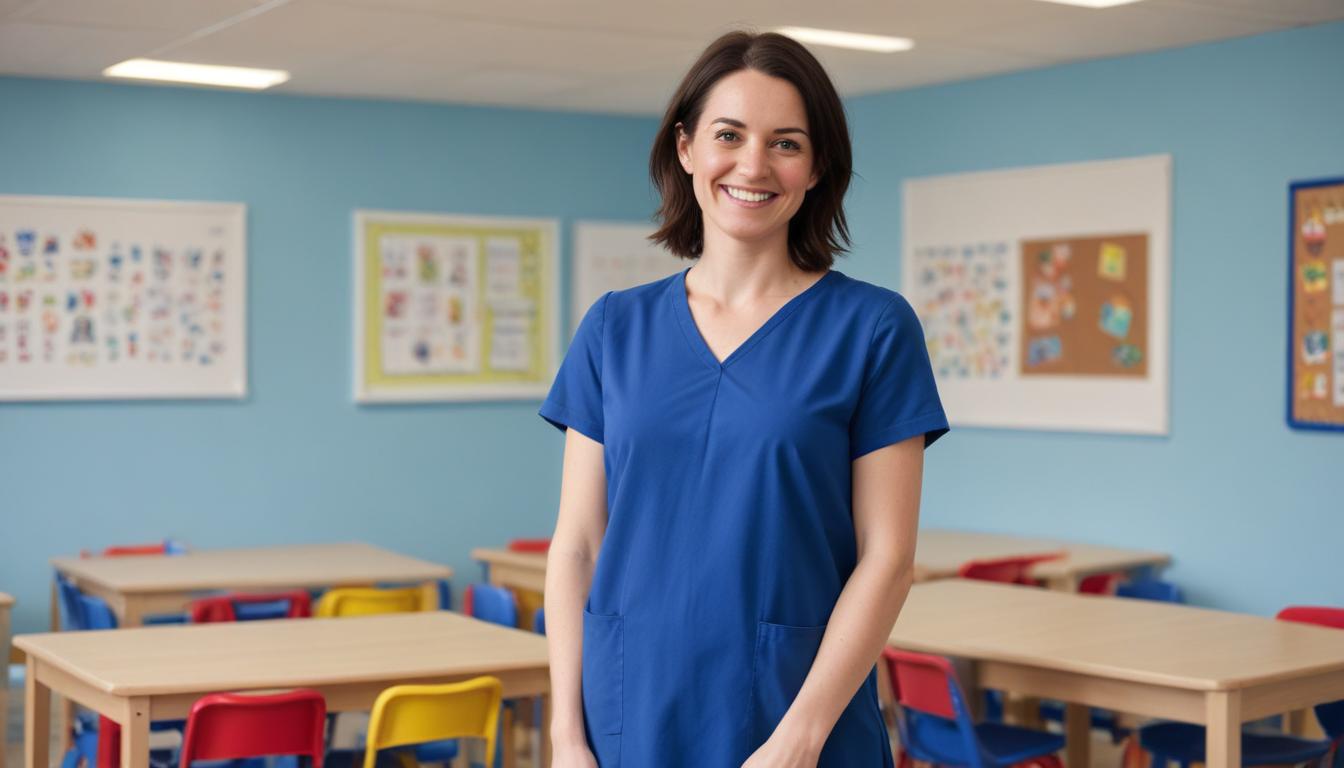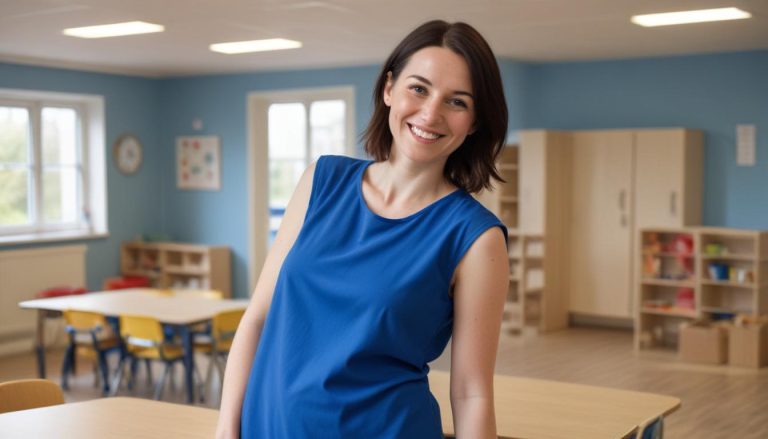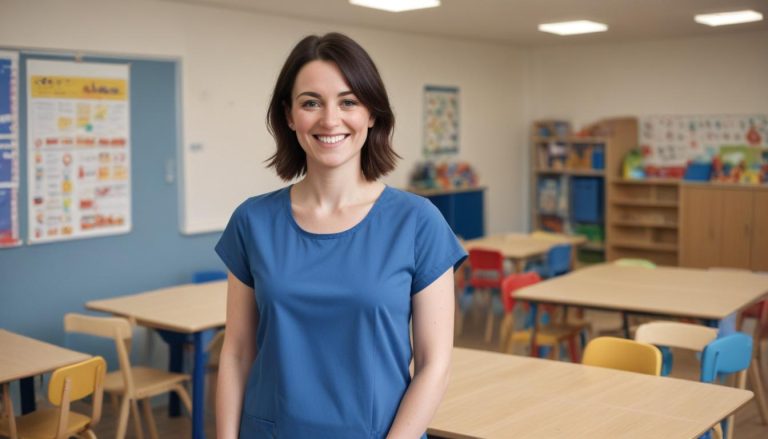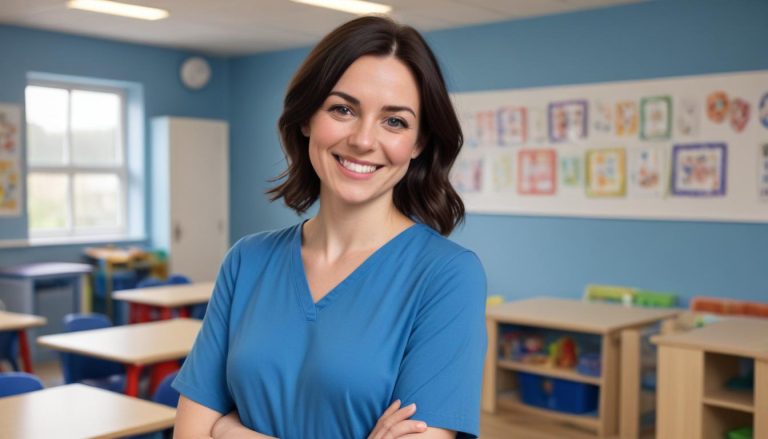This guide will help you answer 5.3 Describe how self-regulation changes according to a child’s age and stage of development.
Self-regulation refers to the ability to develop control over emotions, behaviours, and thoughts. It allows a child to manage their impulses, stay focused, and adapt to situations. This skill develops gradually as the brain matures and children engage in new experiences. Young children need guidance from adults initially, but as they grow, they begin to manage things more independently. Each stage of development brings different challenges and milestones in self-regulation. In this guide, we will cover how self-regulation develops, broken down by age and stage.
Birth to 12 Months: Early Beginnings
During the first year, babies rely completely on adults for help with regulating emotions and needs. They cannot calm themselves or manage feelings without external support. At this stage, the focus is on co-regulation, where caregivers help soothe the baby.
Key behaviours include:
- Crying to signal needs – Babies cry when they feel hungry, tired, or uncomfortable. Adults help regulate these feelings by feeding, rocking, or cuddling them.
- Soothing through touch and voice – Babies respond to gentle touch, calming tones, and consistent care. This helps them feel secure and creates the foundation for self-regulation later.
For example, when a baby is overstimulated by sounds or lights, an adult might pick them up, move them to a quieter space, and rock them until they calm down. This offers the external support they need.
12 to 24 Months: Learning Basics through Repetition
Toddlers begin to show more independence. However, they still rely on adults to guide their emotions. Self-regulation at this age is very basic, and tantrums are common. Toddlers have big feelings but lack the skills to express or control them calmly.
Key behaviours include:
- Impulse control challenges – Toddlers often grab or shout without thinking. They act on instincts and struggle to wait for turns or understand boundaries.
- Beginning to calm with help – Adults play a key role by offering tools like distraction or redirection. For instance, if a toddler grabs a toy from another child, the adult might say, “Let’s give the toy back and pick another one while we wait.”
- Simple routines help – Consistent routines ease difficult transitions, such as moving from playtime to nap time. Routines give toddlers some predictability, which helps with regulation.
At this stage, repetition and gentle reminders from adults guide toddlers in starting to recognise feelings and control their actions. Simple phrases like “Let’s take a breath” are helpful tools.
2 to 3 Years: Gaining Awareness but Needing Support
By two and three years, children begin to recognise their emotions but still struggle to regulate them by themselves. They become aware of social expectations and start trying to match their behaviours to what others expect.
Key behaviours include:
- Increased frustration tolerance – Children may show some ability to wait for short periods. For example, they might wait for a snack without becoming overly upset.
- Using basic language to express emotions – They might say “I’m sad” or “I’m mad” instead of just crying or hitting. This marks a step towards control.
- Struggling with sharing and turn-taking – Social skills are still developing, so conflicts frequently arise during group play.
Although they are making progress, children still need consistent support. Adults guide them by offering tools to express feelings, such as using words instead of shouting or pointing to picture cards showing emotions.
4 to 5 Years: Developing Pre-School Self-Regulation
At this age, children begin to show more advanced self-regulation. Their language skills improve, which helps them express needs and understand explanations better. While they still need help during challenging situations, they are gaining control over their emotions and behaviours.
Key behaviours include:
- Improved impulse control – Four- and five-year-olds may begin to stop themselves from reacting immediately. For instance, they might pause before taking someone’s toy and ask for it instead.
- Understanding rules – They are better able to follow simple rules in group settings, such as lining up or tidying away toys.
- Beginning to calm themselves – Some children might use self-soothing strategies such as deep breaths or walking away from conflict.
For example, in a nursery setting, a child might feel upset when they feel left out of a game. Instead of crying immediately, they might walk over to an adult and say, “I don’t have a turn.” This shows they are starting to problem-solve and regulate emotions independently.
5 to 7 Years: Building Independence in Regulation
Children between five and seven can manage more complex emotions and social interactions. They begin taking responsibility for their behaviours and understanding how actions affect others.
Key behaviours include:
- Empathy develops – They start noticing how their actions make others feel and adjusting their behaviour accordingly.
- Better emotional control – They manage feelings like disappointment or excitement more effectively. For instance, they might lose a game and, although upset, congratulate the winner.
- Understanding consequences – They can anticipate what will happen if rules are broken and adapt their choices to avoid negative outcomes.
Children at this stage can apply strategies they’ve learned, like taking a break when upset or asking an adult for help calmly. However, some emotions, such as frustration, may still overwhelm them at times.
7 to 11 Years: Refining Self-Regulation Skills
By the school years, children develop more advanced regulation skills. Their brains, particularly the prefrontal cortex (which controls decision-making), are growing, providing more control over impulses.
Key behaviours include:
- Improved focus and task completion – Children can stay attentive during activities for longer than before. They can also stop themselves from getting distracted as easily.
- Problem-solving skills – They begin to weigh options and evaluate the best solutions when faced with challenges.
- Using internal strategies – Older children guide themselves more without relying as heavily on adults. For example, they might silently repeat, “I can do it” during a tricky task.
In group settings such as after-school clubs, children aged seven to eleven are better able to work cooperatively with peers. They can resolve simple arguments without needing as much adult intervention.
Teenage Years: Advanced Regulation with Peer Influence
During adolescence, self-regulation continues to develop but becomes more complex. Teenagers encounter stronger emotions as they experience new situations, relationships, and challenges.
Key behaviours include:
- Managing stress – They develop strategies to cope with stress, such as talking with a friend or engaging in hobbies.
- Handling peer pressure – Adolescents regulate their behaviours based on group settings, adapting to fit in while trying to stick to personal values.
- Planning and organisation – They become more skilled at time management and setting goals, which requires advanced self-regulation.
Although they have a strong foundation, teenagers still show occasional impulsiveness. They may need guidance to navigate intense emotions as their brains continue developing into their mid-20s.
Supporting Self-Regulation Across the Ages
Adults play an essential role in supporting self-regulation at every stage. Some strategies include:
- For young children: Use co-regulation techniques, such as soothing, distraction, and routines.
- For preschoolers: Teach social skills and provide language tools to express feelings.
- For school-age children: Encourage problem-solving and independent calming strategies.
- For teenagers: Offer opportunities to discuss emotions openly and learn stress management techniques.
Adapting your approach to meet children where they are makes a big difference. Supporting their development over time helps them build the skills needed to thrive socially and emotionally.
Subscribe to Newsletter
Get the latest news and updates from Care Learning and be first to know about our free courses when they launch.







